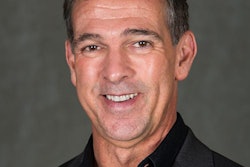In early August, more than three dozen Tribal College and University (TCU) presidents arrived at the woodland headquarters of Educational Testing Service for a first-of-its-kind presidential convening in Princeton, New Jersey.
For most, the convening at the Chauncey Hotel and Conference Center was a reunion of long-time acquaintances to learn new strategies and initiatives to improve the all too familiar problems plaguing tribal higher education institutions today: low student college readiness rates, low funding and low retention and graduation rates.
These obstacles place a heavy burden on TCU presidents but it is a sense of community, culture and unity among the presidents that keeps them driven in their mission to serve the approximately 30,000 full- and part-time Native American and non-native students from more than 250 federally recognized Indian tribes.
“Any convening with other TCU presidents is always joyful and energizing – only another president truly understands the many facets and realities of our work,” says Dr. Cynthia Lindquist, president of Cankdeska Cikana Community College. The gathering at ETS “reinforced the concept that we’re in this together and that we have colleagues who will support and help us,” she adds.
For Dr. Michael Oltrogge, president of Nebraska Indian Community College, the convening served as an acknowledgement that the majority of TSU presidents still struggle with a number of the same issues primarily because TCU students “face greater odds for success” than other students across the nation, he says.
Dr. Charles M. Roessel of Diné College says that many TCU presidents have to deal with tribal councils and strike the balance between providing a Western education and sustaining a cultural connectedness to regional tribes at their institutions. During the ETS convening, open discussions about creating academic “connections of relevance” to Native American culture and symbols permeated several institutional strategy sessions.
Among other challenges, funding and resources — financial and human — for TCUs remains a significant barrier to implementing data and intervention strategies that could potentially help Native American students during their matriculation.
However, a common goal for these institutions is to “provide college degrees for the jobs available on the reservation,” says Thomas Shortbull, president of Oglala Lakota College. Another is to merely get their students to graduation.
Tribal colleges and universities are oftentimes the only post-secondary institutions for Native American students in rural areas making their institutional success a hugely important mission for presidents, Walt McDonald, president and CEO of ETS said at the convening in August.
Initial plans for the August TCU presidents’ convening at ETS began in November 2015 in collaboration with Dr. Cheryl Crazy Bull, president of the American Indian College Fund, and STRADA Education Network.
“The narrative around our Native American students, the Native American community, is so often from a deficit perspective, and we hoped that this convening changed that because we heard from the presidents that there are some good things happening,” says Lenora M. Green, executive director for the Center for Advocacy and Philanthropy at ETS and chief organizer of the convening.
“I think it was important for ETS to really have an opportunity to share that the role that TCUs play is still very viable. It’s still very important, and it’s still very relevant today,” Green adds. “We want to make sure that information is out there about their needs, their successes, their challenges, and how do we support them.”
Currently, there are only 32 fully accredited TCUs in the United States. Few presidents like Lindquist and Oltrogge admit that being a TCU president gets lonely at times.
“Most of us are located on very rural, isolated reservation settings so there is an actual ‘physical’ isolation, but there is also the philosophical isolation in being president of a TCU – ‘who knows what that is?’” Lindquist says. “There is perception that TCUs are less than or not ‘real’ colleges and we fight hard to better tell our story of the amazing work accomplished at our institutions.”
“There’s so much passion for what we do,” she says.
This passion overshadows many of the challenges that these institutions face.
“There are challenges, yes, we’re not ignoring them — the reality is in our face,” Roessel says. “But we look at it very differently, because [students] are nephews and nieces and sons and daughters. We know these people in our schools. That’s very different than other kinds of schools and other colleges.”
Because there are so few TCUs, presidents of these institutions must work collaboratively and meet regularly to understand and stay involved with the changing dynamics of the education system for Native American students.
“Rarely will I say, ‘I’…It’s ‘us,’ it’s ‘we,’ it’s collegial, it’s ‘my peers’ in many different ways,” Lindquist adds.
TCU presidents may gather informally or for conferences from time to time, but one organized network provides leadership, collaboration, technical assistance and a comprehensive data collection system on Native American students for TCUs on a national level.
The American Indian Higher Education Consortium (AIHEC) — headed by Carrie L. Billy, president and CEO, and Dr. David Yarlott Jr, tribal college board chair and president of Little Big Horn College — serves as the formal support network for TCU presidents and Native American education officials. The organization and its tribal member institutions — 36 in total — work to influence federal policies and build programs and initiatives related to American Indian higher education.
AIHEC “promotes and strengthens Indigenous languages, cultures, communities and tribal nations,” while serving member and emerging TCUs, the organization’s website says. The organization also hosts three regular board meetings for presidents each year and TCU presidents and their students gather in Washington, D.C. every February to do advocacy work.
It is at AIHEC board meetings and other summits and convenings, such as the one at ETS, that TCU presidents offer regionally unique lenses and perspectives, and lean on each other for advice about hard but necessary decisions, Roessel says.
“TCUs are unique institutions with unique challenges and only those who have experienced some of the challenges are able to give helpful advice,” says Oltrogge. Even if some of the advice or strategies cannot apply across institutions, “it helps knowing that others care about the same types of situations that you find yourself struggling with.”
A Close Bond
The collective experiences that TCU presidents face group them together in a seemingly exclusive presidents’ club.
“I look to other TCU presidents to help guide me,” Oltrogge says. “I know most of the presidents by name, and I believe that most of them know me by name as well. It is similar to my high school class where you know pretty much everyone and generally have an idea as to where they are coming from.”
Each president’s working relationship with each other fosters the communal respect evident in the Native American culture.
Lindquist shares that Dr. Laurel Vermillion of Sitting Bull College, Dr. Diane Vertin of Lac Courte Oreilles Ojibwa Community College, Dr. Diana Morris of College of Menominee Nation, Dr. Carole Falcon-Chandler of Aaniiih Nakoda College and Dr. David Yarlott of Little Big Horn College are among her closest presidential supporters and allies offering her wisdom and guidance.
Oltrogge has close working relationships with Maunka Morgan at Little Priest Tribal College, and Vermillion and Lindquist as well. And Roessel admits he is “the new kid on the block.”
“I’ve got to earn my stripes…I’ve got to earn my seat at the table and I understand that,” he adds.
AIHEC has also helped tribal colleges and universities diversify their presidencies by supporting and providing mentoring opportunities for newer and younger presidents. Lindquist is proud to serve as a mentor to a younger cohort of presidents like Dr. Pearl Brower of Ilisagvik College, Dr. Leander “Russ” McDonald of United Tribes Technical College and Dr. Justin Guillory at Northwest Indian College.
Lindquist, who has been president for 16 years, says that she may refer to a younger colleague as ‘my girl’ or ‘my boy’ because of the cultural context. Further, women presidents may refer to each other as sisters, and men as brothers.
It is this shared unity and respect that ties the collegiality and bond of the presidents’ roles to the Indian culture that the presidents hope to instill and model for their students.
Respected elder presidents like Lionel Bordeaux — president of Sinte Gleska University for 40 years and founder of the tribal college movement — drive this point home for the majority of TCU presidents. Bordeaux is an idol to many, including Roessel and Lindquist who even calls him uncle.
“Lionel Bordeaux is a very special human being, not just a special president. He worked with my father” at then-named Navajo Community College, Roessel says. Hearing stories of the battles Bordeaux and his parents fought for the tribal college movement, the Diné College president looks up to Bordeaux with deep respect.
“Lionel continues to bring us back to what is key about us and that ‘how’ and ‘why’ we were created,” Lindquist says. “Helping reinforce identity to our students is just critical to them gaining that confidence. Many of them are at different levels of understanding who they are identity-wise and culturally…but education really is the pathway.”
While the challenges may seem daunting, the presidents are more than prepared to face the obstacles that lie ahead for TCUs. Feeling the weight of history, Roessel says that tribal college presidents and their institutions have a great responsibility and are accountable to their communities.
“Nation building is not something you hear many colleges talk about,” Roessel says of the role of TCUs today. “The [community] impact is greater. That exclusive club that we have is also a shared club of optimism and not of defeatism.”
This article appeared in the November 16, 2017 issue of Diverse magazine.
Tiffany Pennamon can be reached at tpennamon@diverseeducation.com.
















